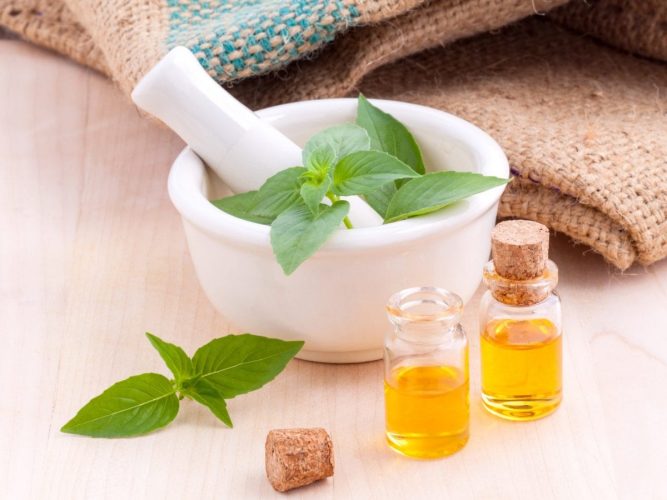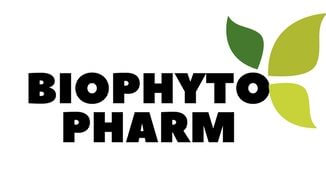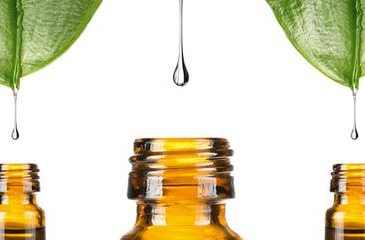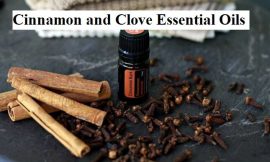Phytotherapy: How to use Plants or Parts of Plants?

Although there are currently many plants extracts in the form of food supplements that have the triple advantage of being easy to take, not requiring any preparation effort, and often offering a controlled content in Active ingredients, it can be a lot of fun to prepare your herbal remedies (Phytotherapy).
It is also in the interest of being able to use any of the plants, provided that you have it at your fingertips. Not all plants are found in the form of food supplements. Take the simple example of the fragrant Woodruff: This small white flower grows in the spring in the undergrowth and is deliciously scented by drying…
It is difficult to get it in capsules or a tea bag. On the other hand, you only need a walk in the forest and a single harvest to enjoy it all year round!
Harvesting plants or parts of plants
What are you going to reap? Choose plants that you know well and that you are not likely to confuse. Some plants are poisonous. Nature is not always merciful with the picker… Just a few leaves of Laurel-Rose, a little hemlock, datura, or digital to do you a lot of harm! The identification of plants is therefore paramount. The ideal, to learn, is to walk with a person keen on botany. There are also many structures, often associative, that offer hikes or even internships to discover the flora and its benefits.
When you have filled your basket with leaves and flowers, what are you going to do with your harvest? First of all, check well, one last time, that you have correctly identified the plants. If necessary, look on a guide to the Flora or, in this book, and carefully compare the descriptions; But, again, there is nothing like doing his pickings accompanied by a connoisseur, at least the first few times.
Depending on the time of flowering, maturity, and the parts of plants concerned, harvest times vary. In spring and summer, it is mainly planted, whose active ingredients are concentrated in the leaves, and especially the interesting flowers.
Choose a dry and sunny day to avoid the stormy atmosphere. Make your harvest preferably in the morning, when the dew is completely evaporated, or failing in the evening, but before the moisture has fallen. Plants or parts of plants must not be wet, otherwise, they may ferment and rot, and lose all their qualities.
The Necessary Equipment
Sharp scissors and knives are imperative for cutting the rods sharply. To prevent the plants from spoiling, be careful not to crush them: a basket is the best container to deposit your pick. It is strongly advisable not to mix the different parts of plants during the harvest. You can take several baskets, otherwise, you only collect one plant during your walk. And most importantly, do not let your crop pile up in the basket when you get home: When you return, take care of your plants.
Where to pick?
The more the place of your picking will be from the urban areas and the crops, the better your harvest will be. Nothing beats a place a little wild. Pay close attention to the plant environment: if there are a few fields in the vicinity that are regularly planted with fertilizers and pesticides, there is no need to linger. Do not pick contaminated plants. Avoid also dust-covered plants that grow along roadsides and roads. We never wash the parts of plants that we collect, so they must be clean when picking.
The Basic Rules
When picking up or cutting plants, dispose of small wastes (other plants, debris, etc.) before putting them in your basket. This is much easier to do at harvest time than later on. be strict on quality, because the plant must be perfect: wilts, discolorations, leaves nibbled and stains are all faults to be taken into account. Especially since defects are often contagious and you may “condemn” your entire crop.
Dry and Keep
To dry the roots, flowers, bulbs, berries, and fruits, hang them or spread them without being overweight on racks or crates, usually in the shade in an airy place (e.g. in the attic). If the roots are fleshy, it is better to cut them into slices. The stems and leaves can be dried in the sun. Once your plants are dried, distribute them, without mixing them, in paper bags, envelopes of letters, or cardboard boxes. Avoid plastic and metal… and shoe boxes, even new ones (to prevent the plants from absorbing bad odors).
If you Grow Your Plants
Aromatic and medicinal plants (parts of plants) are generally quite undemanding, often those that grow wild in wastelands. They won’t make any trouble to invade your garden! Preferably put them in a place sheltered from the wind. If you don’t want to ask questions, sow, and replant in sterile soil. If you are a perfectionist, you should know that garlic, rosemary, alchemilla, marjoram, mint, hyssop, sage, oregano, juniper, laurel, hazel, lime, campaniles, poppy, Blueberry, and bus prefer a slightly alkaline soil: spread once or twice a year from Ashes of wood and limestone.
Also, Citronella, borage, knapweed, chamomile, thyme, fennel, lavender, and bulbous or tuber plants prefer more sandy land. Therefore, separate these two broad categories.
Planting
They sow as soon as March under a greenhouse or in the House near a window exposed to the south and, after the frosts, in the shelter, until July. Seedlings are usually carried out on potting soil, spacing the seeds, and then lightly filling them with the dish of the hand. Most aromatic plants germinate at 15-21 °c within a few days. You will transplant 4 to 6 weeks later.
If you have late sowing, you will leave it in place by spacing the seedlings. Follow the instructions on the pouch to see how much water to sprinkle or what is the best germination temperature. In summer (June, and July), you can make a seedling directly in place (without subculturing).
The Division
Every 2 or 3 years, divide the woody plants (thyme, rosemary, Lavender…) or bushy ones (sage, Queen of the Meadows, chamomile, St. John’s Wort, Mint…): It is enough to clear the Earth on one side, to separate the roots by hand, to replant and to water.
Cuttings
It’s pretty hard to succeed, but it’s worth a try when you have no seeds or roots: cut it in a neat, slanted way, about ten centimeters above the hard part of the stem. Remove the leaves on one-third of the stem. Plunge the cutting into the water, wait for it to produce roots, and then replant it in a pot with potting soil. Before fall, replant in the middle of the earth.
Potted culture
Most medicinal plants (basil, lavender, rosemary, droplet, hyssop, mint, parsley, queen-of-Meadows, St. John’s Wort…) can be grown in pots. The larger and deeper the container, the more the plants will spread. If you grow your plants inside, make sure, on the one hand, that the room temperature does not exceed 18 to 19 ° and, on the other hand, that the plant has natural light for at least 8 hours per day. Herbal remedies generally do not appreciate draughts, think about it when you decide on the place you reserve them in the house.
Herbal Teas
What if I told you that nothing would ever replace a good herbal tea? It’s true, it’s a little time, and you have to heat water, and wait until it boils or it infuses, but frankly, it’s worth it! Because while you’re “caring”, you drink! Good water loaded with active ingredients. Moreover, even if, a few years ago, the herbal teas were relegated to the “Grandma” ray with slight contempt, they are again in the stern.
You can choose a single plant or mix them, depending on the tastes or effects you are looking for. Apart from some recipes coming from famous herbalists, I took the party, in this Bible, to propose simple herbal teas according to the indications: Linden Flowers against the flu, Hawthorn in case of palpitations, dandelion roots for the liver … But each time, many plants can be useful and it is quite possible to mix them.
To do this, you have to choose plants or parts of plants that can be prepared together: if you put roots that must be boiled to extract the active ingredients with flowers that only support the simmering water, this will not be appropriate Not. For example, queen-of-meadow flowers should not be boiled with burdock root: The Queen of the Meadows would lose many of its active ingredients during the boil.
In the case of rheumatism, for example, you can mix the leaves of blackcurrants and flowers of queen-of-meadows equally and drink 3 cups of herbal tea a day (1 tablespoon of the mixture infused 10 minutes in a cup of boiling water). If you have skin problems, boil 40 g of a burdock root mixture and wild thought for 10 minutes and then infuse 5 minutes before filtering. Drink the mixture in the daytime. If you are preparing enough herbal tea for 1 or 2 days, keep it cool and, depending on your taste, make it more or less warm when you drink it.
What you Need for your Preparations
Carefully choose your equipment by preferring enameled pots and wooden spoons. The fewer plants are in contact with metal or plastic, the better.
Avoid aluminum utensils and containers that can be toxic and that the plants absorb. To preserve your herbal teas, prefer cardboard boxes or glass stoppers that you store in the shelter of light.
Depending on the plants and especially the parts of plants used to make their herbal tea, the method of preparation is different. Infusion is well suited to flowers and leaves in general, the most fragile parts of plants. The decoction is mainly used for roots, stems, and barks.
The water used must be as pure as possible and weakly mineralized, such as spring water or, better still, osmosis water. Avoid tap water. We often have the habit of drinking herbal teas in the evenings, but they can accompany the days. Why not take the habit of drinking 1 liter of herbal tea between meals, for example? By varying the mixes according to your tastes and the effects you expect.
The Brew
It consists of pouring boiling water on plants at the precise moment when the water boils. You then put the plants in the water, stir lightly and cover the pan. Then allow the necessary time (from a few minutes to 1 hour depending on the plants) to brew. You can beat with a tea whip (bamboo) or a wooden spoon to speed up the diffusion of active ingredients.
When the brewing time is enough, filter, and drink. You can eventually sweeten it with honey, but the idea is still the “pure” herbal tea unless you have a sore throat. In this case, honey will be ideal. Prefer bulk plants rather than tea bags that often contain “crumbs” or even plant dust.
The Decoction
In this case, it is a matter of putting plants in cold water and then heating the water to a boil. The boiling time can range from 2 minutes to ½ hour depending on the selected plant (or plants) and the hardness of the plant parts used. Then you leave or not brew, always holding a lid on the pan. And of course, we filter before we drink.
The Maceration
The plants are left to soak in a liquid: water, alcohol, oil, honey, wine, vinegar, etc., for at least 15 days. The preparations obtained are a little more complicated but keep longer. So we can always have it on hand.
Other Preparations, to Buy or to do at Home
The juice
You have to reduce the plant to puree. It is better to do it with fresh plants, but sometimes – when the plant is too thick or gives little juice – it is necessary to cook it in a little water. Once the pulp purée is obtained, filter and drink the juice diluted in a little water or use it in a compress. This method is rarely used because the “product” obtained is often very bitter and does not retain.
Compresses and Poultices
Compresses and poultices are mainly used in cases of skin problems, sprains, fractures, and muscle or joint pain. Use only perfectly healthy plants. You can associate them with vegetable oil (olive oil, for example) or clay or honey according to the different recipes to follow scrupulously. Avoid compresses and poultices on the belly. Proceed in steps: Leave in place for 20 minutes. Start again 2 hours later with a new compress and leave 30 minutes, etc. Never reuse a compress or poultice. Throw them.
- Compress: In a compressor, a clean cloth is soaked with a concentrated infusion or a plant decoction, then applied to the skin and maintained by a bandage.
- Poultice: The plant can be applied directly to the skin when the leaves or flowers are fine. Otherwise, they can be heated in water or lightly crushed to the rolling pin so that the active ingredients penetrate faster. Hold with a cloth or a strip. Medicinal wines It is a matter of making macerate the plant fresh or dried in wine (white or red, but preferably organic) for a few days to several weeks according to the “Recipes” before filtering by expressing well the saps of the plant. These wines can be kept for several months at the expense of. In general, a small glass of medicinal wine is drunk before or after each meal, as an aperitif or as a digestive.
Syrups
Infusions or decoctions with added honey or unrefined sugar allow making syrups that can be preserved for up to 1 year. Just mix a ½ liter of brew or decoction to 500 g of honey or sugar and heat on low heat stirring until you get a syrup. Then it is consumed as a commercial syrup, diluting it to 1 tablespoon in a glass of water or, better, in herbal tea.
With some fruits and vegetables, you can also make cold syrups. This is the case, for example, of the numerous Antiall syrups based on black radish, turnip, carrot, and onion… A few slices of the vegetable in a plate with a little powdered sugar and the juice is formed naturally.
Medicinal Essential oils
Applied in friction on the skin, plant oils are most often used to relieve rheumatism or improve circulation, or even soothe burns, and itching… It is used, depending on the case, the dry or fresh plant, in pieces, which is put to macerate in olive oil. To improve the extraction, the oil must heat up, without reaching a temperature too high. So we use Bain-marie or just solar energy. Wines, oils, and syrups should be placed in tinted glass bottles and kept free of light in a cool place.
Mother Tinctures
These alcoholic plant extracts, very concentrated, are often very practical to use (a few drops in a glass of water morning and evening). Until recently, pharmacies were readily available, but they seem to be getting more and more scarce, hence the importance of learning how to prepare them. After all, you are never better served than by yourself!
To make a mother tincture, the dried or freshly chopped plant must be macerated in strong alcohol (brandy, rum, vodka) as pure as possible in a jar.
You can also use a mortar and a pestle to first crush your plant carefully. You then put the plant and its juices at the bottom of a jar and cover it with alcohol. Leave Macerate for 2 to 3 weeks, shaking the jar well firm every day. Then filter the maceration, finally, pressing strongly to recover all the juices. Then pour in small tinted vials on which you paste a nice label with the Latin name of the plant and the date. The dye is preserved for several years.
Homeopathic Remedies
Once you have the mother tincture, you can create your homeopathic remedies: you put 1 drop of mother tincture in a vial. In another vial, you mix 10 cl of strong alcohol (whiskey, cognac, vodka, brandy…) and 50 cl of pure water (type Mount Rocous or osmosis).
At the drop of the mother tincture, you add 99 drops of the water-alcohol mixture. You seal the bottle and you shake. Count at least 100 shakes: you get 1 ch dilution. Take 1 drop of this dilution, add 99 drops of the water-alcohol mixture, you get a 2-ch dilution, and so on until the selected dilution.
The Glycerinated Macers
These are plant bud extracts. The plant is macerated for about 3 weeks in a mixture composed of one-third of alcohol, one-third of glycerine, and one-third of pure water, shaking the vial every day, then filtered and stored in a dark place, in a vial of tinted glass, if possible.
The floral elixirs are close to homeopathy, the therapy by the floral elixirs is intended to rebalance our emotional system. This method uses remedies developed from mother tinctures of plants strongly diluted in alcohol. At the beginning of the twentieth century, Dr. Edward Bach created 39 remedies, mostly stemming from flowers or the expression ≪ flowers by Bach ≫. Other researchers have since developed other remedies from other flowers, which is why the expression floral elixirs are now used.
You can also make them yourself, by preparing a mother essence, to dilute according to your needs. To prepare an elixir, you have to choose your season, which will necessarily be sunny. In a bowl, pour 2 liters of water and cover the surface with fresh flowers of the chosen plant, Évitan to touch them too much. Leave this bowl exposed in the sun for a morning or afternoon of great sunshine, then filter and pour enough liquid in a vial to fill it half, then complete with cognac (bio, if possible!).
You can sacrifice the rest of the maceration. To make your elixir, pour 30 ml of cognac into a small vial of tinted glass and add 2 drops of your initial mixture of maceration and cognac (to be kept in the shade and cool).
Essential Oils
Essential oils are oily, volatile, and fragrant products, secreted by aromatic plants. They are extracted by water vapor distillation or simple cold expression so that the active principles are perfectly preserved. An extraction requires a specific material and is therefore difficult to do at home. On the other hand, the use of essential oils, powerful concentrates of plants, is relatively easy, provided it never exceeds the recommended doses. For this, I invite you to refer to the numerous works of Danièle Festy, a specialist in the subject.
Essential oils are used internally: 1 to 3 drops in 1 teaspoon of honey. But they are mainly used by external means: Massage (in combination with vegetable oil and Essential Oil), inhalation, dispersion, bath, etc. Essential oils are bought in pharmacies, para-pharmacies, and natural products stores. Choose from organic farming, with the AB label.
Food Supplements
There are also many “ready-made” products marketed in pharmacies, para-pharmacies, natural product stores, or mail-order sales. Again, when you have a choice, prefer the brands that have the AB label (organic farming). You will find capsules, tablets, liquid extracts, and pure or mixed plants. Remember to always accompany their intake of a lot of water.





